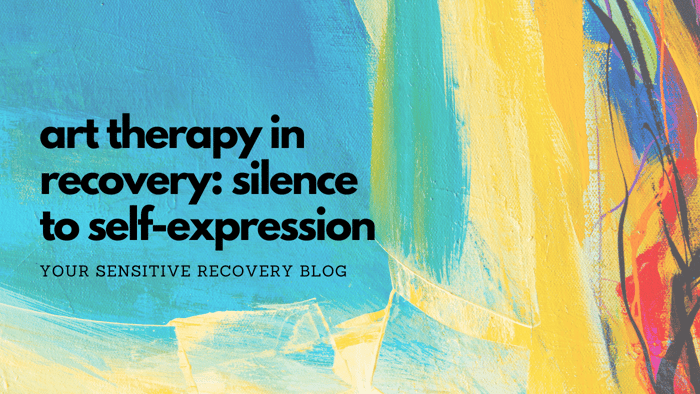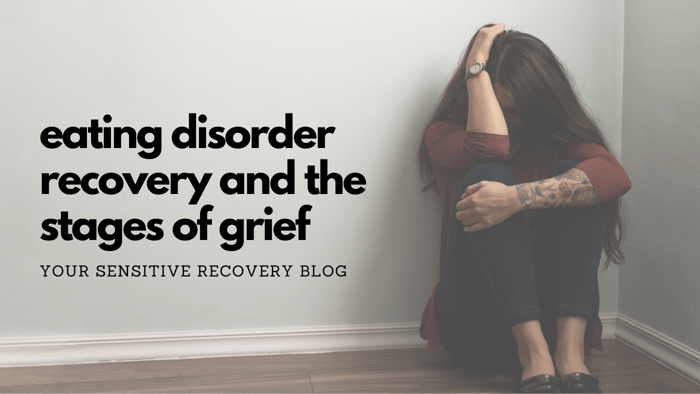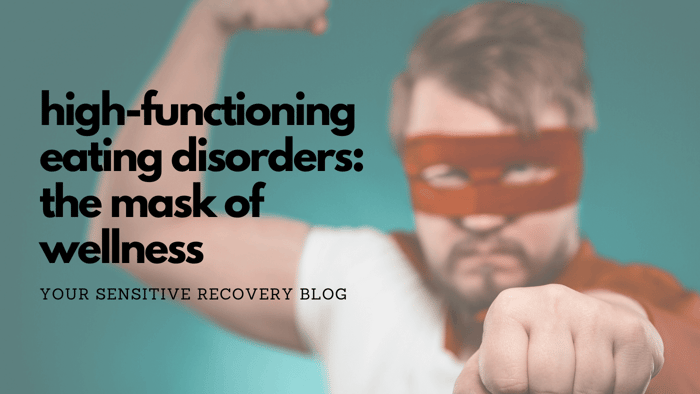When recovery feels like an endless tangle of thoughts and feelings you can’t fully articulate or even understand, art therapy can offer a language all its own. Especially in the early stages of recovery, many individuals with deeply entrenched eating disorders can be so detached from their emotions that the effects of traditional talk therapy are limited. That’s where art can step in, allowing colors, shapes, and textures to speak what words cannot.
 "Help"
"Help"
In this post, I'll delve into how art therapy can build a bridge from silence to self-expression, and how collage, painting, and other creative forms were integral in healing my own eating disorder.
Navigating the Inexpressible
Most people, at one point or another, have had the experience of being unable to find and use words to describe an emotional experience. For some, this struggle is more familiar and more persistent.
Alexithymia is a condition or trait characterized by difficulty identifying, describing, and processing emotions. It is not a medical diagnosis but does commonly occur alongside certain mental health conditions; eating disorders included. For those who struggle with alexithymia, progressing in traditional "gold standard" therapies for disordered eating can be challenging, to say the least.
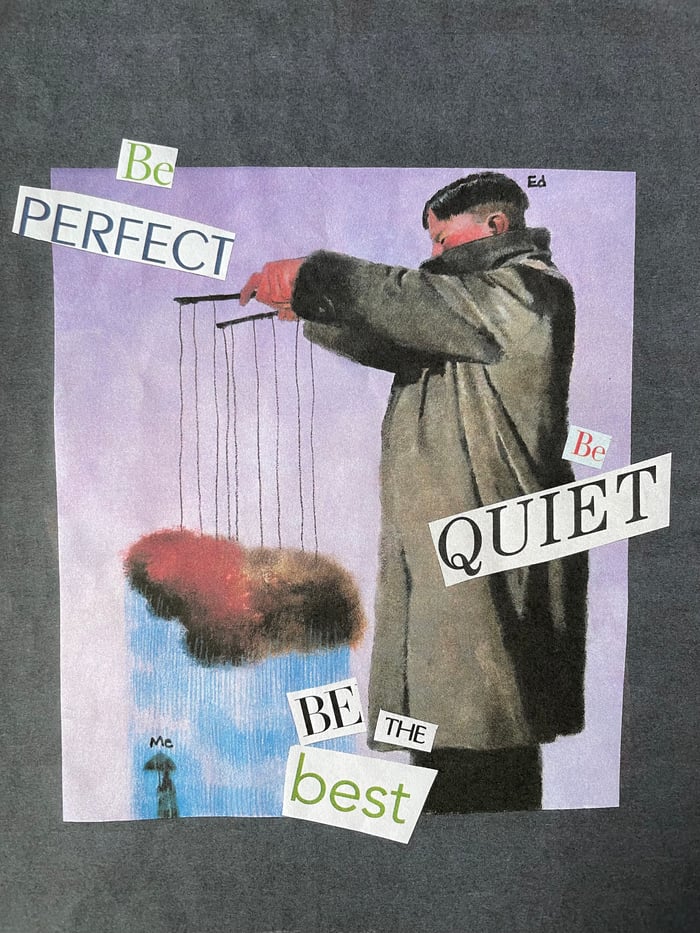 "The Eating Disorder Speaks"
"The Eating Disorder Speaks"
I first heard of this term during my own eating disorder when my therapist explained it to me. As a highly empathetic, sensitive person, I had always assumed I was, what one may call emotionally literate. However, when I read the description for alexithymia, it seemed to fit my current experience. A malnourished brain certainly didn't help me identify and articulate what was happening in my emotional landscape, but there may also have been something else at play.
The Rise of Art Therapy
Since the dawn of time, humans have used creative expression as a means of communicating and processing emotions. However, it wasn't until the 1940s that art began to gain recognition as a distinct therapeutic practice.
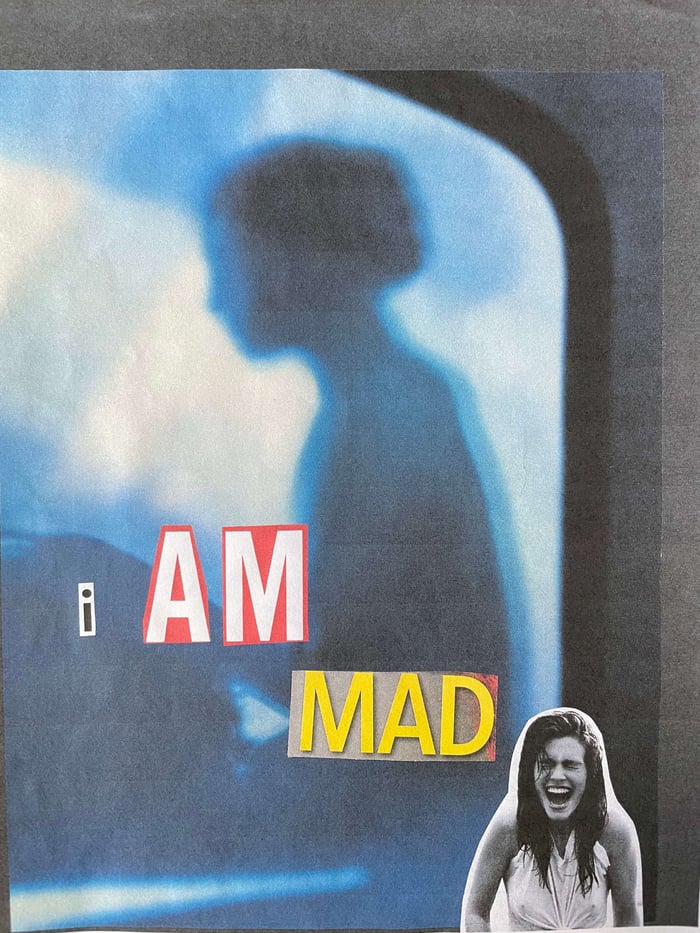 "The Things We Hold Back"
"The Things We Hold Back"
Margaret Naumburg, a psychotherapist and "the mother of art therapy" viewed artistic expression as a form of symbolic speech and as a potential pathway to uncovering unconscious thoughts. She was the first American psychologist to provide formalized training and graduate-level courses in art therapy.
Over the decades, art therapy has continued to evolve as a profession. Today, art therapy is widely embraced in a variety of settings, from hospitals to schools to treatment centers, offering us a way to explore and express what is often beyond words.
My Voice, In Snips and Slips
I would sit silently in therapy, seemingly unable to speak. Once, I described it as akin to wandering through the desert, parched and sunburnt, desperately searching for an oasis—the right word, the thought organized in such a proper fashion that it would all finally make sense. (Fast forward to the future when my dear husband wrote a song about this experience, lovingly calling it, Desert Mode.)
I discovered, however, that when I would flip through a magazine, my eyes would land on a certain word, image, shape, or color, and a lightbulb would seem to flicker on - YES. This is what I mean.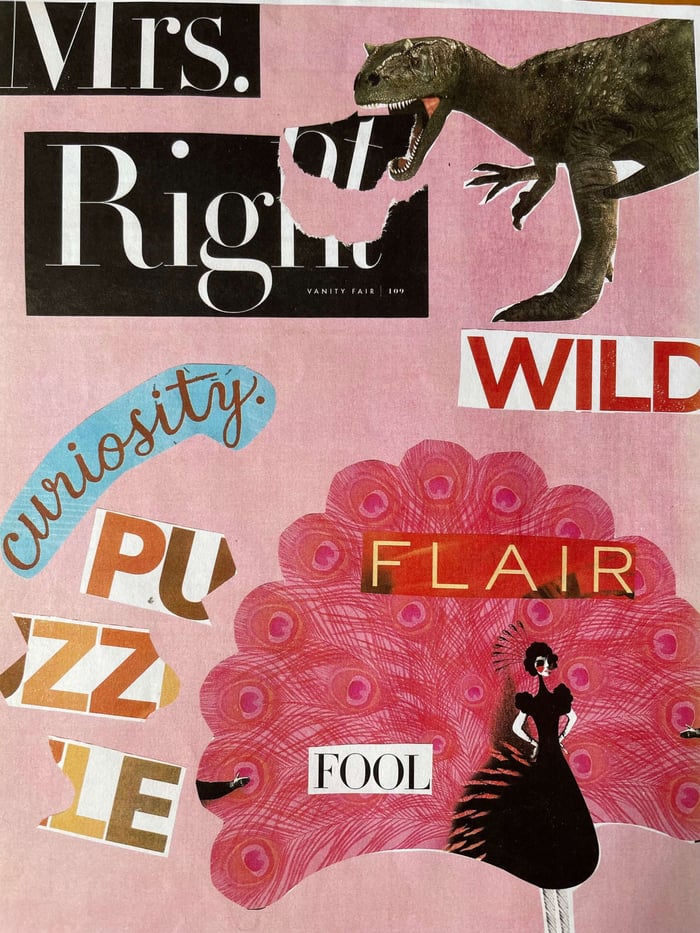 "F*ck It"
"F*ck It"
Collaging became an integral way of tuning into my thoughts and feelings. At first, they reflected a chaotic, trapped mind. As I became better acquainted with the purpose my eating disorder was serving, my art took on a more introspective tone.
Finger painting was another profound discovery in my healing journey. As a perfectionist with some sensory struggles, it was initially rather challenging, but as I let go of the need for it to be just right, and relaxed into the sensation of my fingers slipping across the slick paper, my feelings led the way.
I loved using finger paints when I was experiencing intense emotions, particularly anger. The physical aspect was such a release.
Getting Started With Art Therapy
 "Emerging"There's no right or wrong way to create art. I used to think, "Well, I'm not an artist. I can't make art." But creating is what makes you an artist. I know that a blank canvas can be daunting, especially if you resonate with being a typically over-controlled human.
"Emerging"There's no right or wrong way to create art. I used to think, "Well, I'm not an artist. I can't make art." But creating is what makes you an artist. I know that a blank canvas can be daunting, especially if you resonate with being a typically over-controlled human.
Granting yourself permission to just see what happens, without attaching to any sort of outcome, is essential to healing through art. You want to let the creation live of its own accord.Collaging, fingerpainting, and working with modeling clay are all simple and cost-effective - great for beginners. Watercolor, while sometimes requiring more costly supplies, is also another lovely way to ease into judgment-free creation. Watercolors have a way of never looking like how you expect them to. They expose you to a kind of intentional imperfection which is a great way to combat perfectionistic tendencies.
If you need a jumping-off point, try creating art with the following prompts:
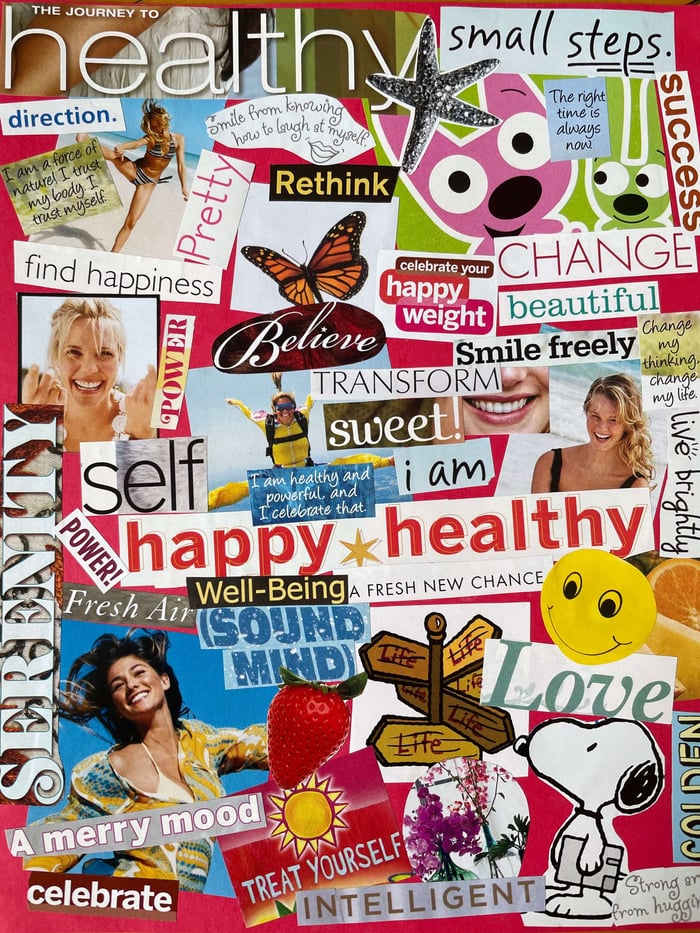 "Healing"
"Healing"
- My Past, Present, and Future.
- What Am I Not Saying?
- How I Currently Feel
- I'm Afraid of...
- The Real Me
- My Inner Critic and My Inner Ally
- An Affirmation Collage
And let's not forget about the power of writing and performance art. Profound healing can also occur through poetry, drama, music, dance, and more. Take note of which art medium, whether visual or performing, gives you a little jolt in your heart and soul. There's an important message waiting to be expressed.
For anyone navigating recovery, art can be a safe place where healing can unfold without judgment or expectation. Whether through collage, painting, or rhythmic dancing, art invites us to explore our inner world, process complex feelings, and foster self-compassion along the way.
I hope that my personal examples and reflections inspire you to pick up some art materials of your own and see what unfolds when you allow your creativity to speak.
❤️🩹
✨ Josie Munroe, LMFT is a licensed therapist and owner of JosieMunroe.com and Your Sensitive Recovery. As a recovered clinician and Highly Sensitive Person, she loves supporting others on their journeys to form new, empowered relationships with food, their bodies, and their sensitivity. Join the newsletter for a weekly boost of hope and inspiration. You deserve a recovery that works for you! ✨

